SD › Italy › Venice › Top Things to Do
Updated: May 5, 2022
By Santorini Dave
The 9 Best Tours in Venice
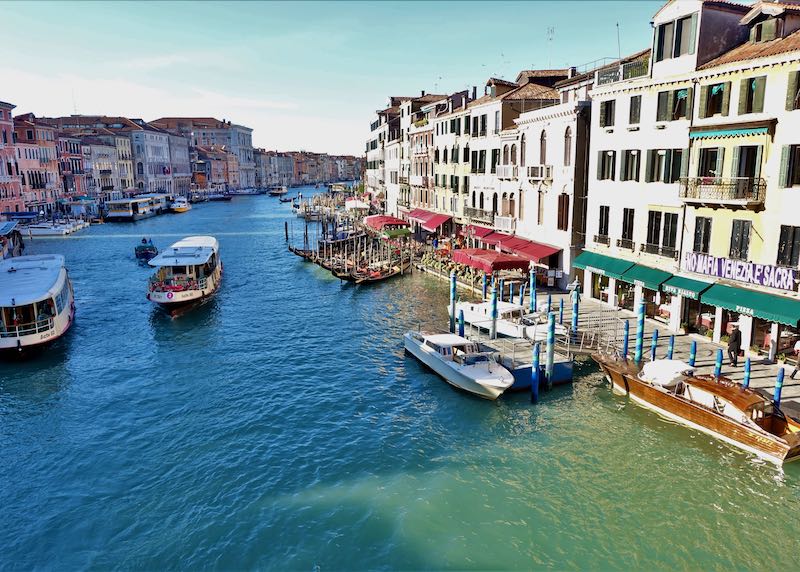
- Venice in a Day Tour – Full-day tour of Venice’s greatest sights: St. Mark’s Basilica, Doge’s Palace, Rialto Bridge and Market, and of course, a gondola ride.
- Legendary Venice: St. Mark’s Basilica & Doge’s Palace Tour – Half-day tour of the two most important sights of the city with in-depth insight from a knowledgeable guide.
- Exclusive Alone in St. Mark’s & Doge’s Palace Tour – Escape the crowds and tour the palace with a small group in the quiet of the evening followed by an exclusive visit to the basilica after it has closed to the public.
- Jewish Ghetto Walking Tour & Gelato Tasting – Guided tour of the world’s first Jewish Ghetto (established in 1516), its narrow lanes, piazzas, historic synagogues, and Rabbi’s house, all capped off with a sampling of gelato.
- Gondola Making Workshop – Hour-long visit to the workshop of a remèr, one of only 4 people in the world who knows how the make the traditional oars and rowlocks used on gondolas, each one custom-built for a specific gondolier’s height, rowing style, and needs. The most authentically Venetian experience in the city.
- Create Your Glass Artwork: Private Lesson with a Local Artisan – Learn Murano-style glass working techniques from a master artisan beginning with a demonstration followed by step-by-step instructions to create your own glass art keepsake.
- Yummy Cooking Class in Venice – Taught in the chef’s home, learn to make fresh stuffed pasta by hand, Italian cookies, and a classic Venetian dessert. At the end, dine on the day’s creations paired with local wine.
- Rialto Market Food & Wine Lunchtime Tour of Venice – Half-day walking, talking, eating, and drinking tour with stops at a thousand-year-old food market and Marco Polo’s home. Snack on cicchetti (Venetian tapas), seafood, tiramisu, local wine, and more along the way.
- Cicchetti Dishes & Wine Bar with a Local – Bacaro (wine bar) tasting tour through the Cannaregio and San Polo areas. Sample a variety of cicchetti and local wines, ride a traghetto (stand-up gondola), and finish at the Rialto Bridge. Morning and evening tours available; morning tours add a stop at the Rialto Market.
- Skip the Line Tickets in tourist-packed Venice are strongly recommended, especially during high season (June through August). The tours recommended above all include skip-the-line access, where applicable. Most major sights offer skip-the-line access with advanced reservations on their websites: St. Mark’s Basilica • Doge’s Palace, St. Mark’s Museum, and Museo Correr • Galleria dell’Accademia • Galleria dell’Accademia • Peggy Guggenheim Collection • Teatro La Fenice
24 Best Things to Do in Venice
1. Saint Mark’s Basilica

Venice’s most famous landmark, the Basilica di San Marco was built from an overwhelming combination of over 500 marble columns in varying colors, shimmering gold and Murano glass mosaics, a golden jewel-encrusted altarpiece, and immense treasures plundered during the Crusades. Construction on the basilica began in 828 in order to house the body of St. Mark the Evangelist, one of the 12 apostles, stolen from Egypt by Venetian merchants who snuck the body past the Muslim guards by hiding it in a barrel of pork fat. After the original basilica was burned down, the current basilica was erected, beginning in the mid-11th century, blending Venetian, Byzantine, and Gothic architecture over the centuries with the last structural changes finished in the 16th century. Much of the later work incorporates plundered stone, columns, capitals, and more taken from Constantinople during and after the Fourth Crusade. Its trove of art inside include Ancient Roman bronze horses, 8000 square meters of intricate mosaics, and the gold and silver Pala d’Ora with its 2000 gemstones. Each part of the cathedral complex operates on its own schedule. The basilica itself is free to enter and open Mondays through Saturdays from 9:30 a.m. to 5:00 p.m. and Sundays from 2:00 p.m to 4:00 p.m. in winter and 5:00 p.m. in summer. The bell tower is open daily from 9:00 a.m. to 8:00 p.m. and costs €10 to climb. St. Mark’s Museum (with the original bronze horses and access to the balcony) is open from 9:45 a.m. to 5:45 p.m. (Sundays until 4:00 p.m. in winter and 5:00 p.m. in summer) and costs €5. The Pala d’ Ora is open the same hours as the Museum and costs just €2 to visit. The Treasury of St. Mark (Byzantine, Islamic, relics, and liturgical items looted from 13th-century Constantinople) is open from 9:30 a.m. to 5:00 p.m. most days (Sundays from 2:00 p.m. to 4:30 p.m.) and costs €3 to enter. Skip-the-line access to the basilica is available from April through early November and costs just €3. Entrance to the other parts of the cathedral complex can only be purchased on-site at the time of entry.
2. Doge’s Palace
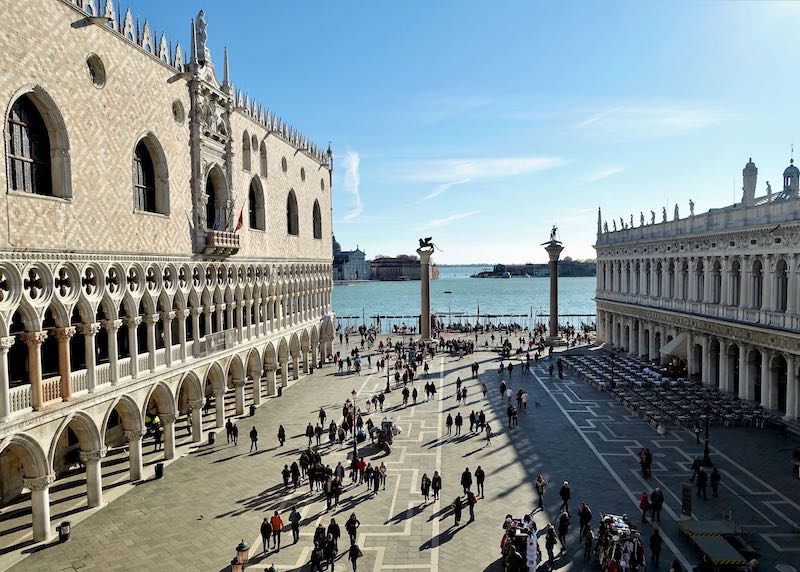
Next to St. Mark’s Cathedral facing the Grand Canal is the Palazzo Ducale, the opulent palace of the doge (leader of the Venetian Republic from its founding in 726 A.D. until it was conquered by Napoleon in 1797). Its location became the seat of government beginning in the 9th century and a small wood and stone fortress was constructed here. Construction on the current palace began in 1340, centered around the remains of the old fortress, and continued for the next few centuries. The Doge’s Palace today is an unmistakable masterpiece of Venetian architecture, a blend of Gothic, Byzantine, and Moorish styles. More than just the doge’s residence, the palace also served as the seat of government and housed the prison. The interiors house a rich collection of art by Venetian masters, including Tintoretto, Titian, and Veronese. The prison here famously held Cassanova, until his grand escape through its roof, into the main palace, and out the Porta della Carta (ceremonial entrance); the infamous Bridge of Sighs connects the prison to the interrogation rooms in the palace. The Palazzo Ducale is open daily from 9:00 a.m. to 6:00 p.m.(last admission at 5:00 p.m.) and costs €26. Tickets for the Doge’s Palace also include access to the Museo Correr, Archaeological Museum, and the Marciana Library located a the opposite side of St. Mark’s Square.
3. Gallerie dell’Accademia
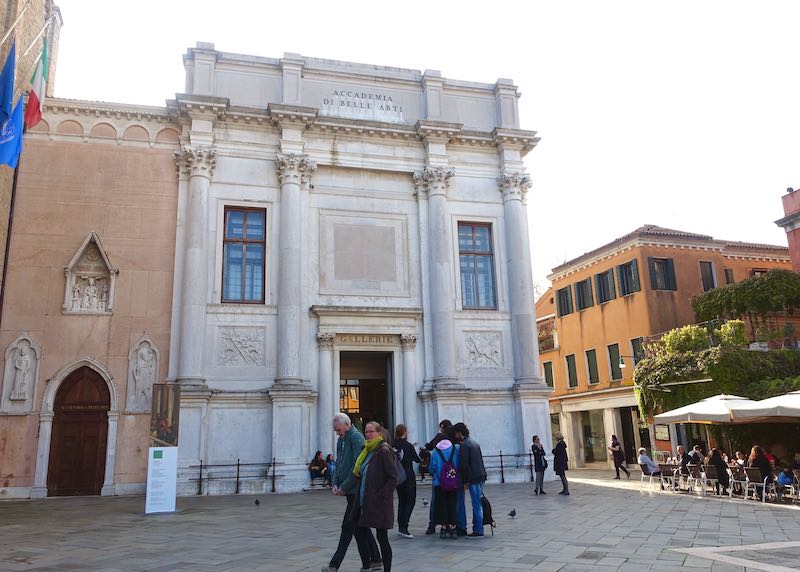
Venice’s premier art museum, the Gallerie dell’Accademia displays masterpieces by the most prominent Venetian artists from the 14th through the 18th centuries, among them Giovanni and Gentile Bellini, Titian, Tintoretto, Veronese, Lorenzo Lotto, and Tiepolo. Some works by other Italian artists are housed here as well, most notably Da Vinci’s Vitruvian Man (though this particular work is so fragile, it is only displayed rarely), along with a few pieces from outside Italy, such as Hieronymus Bosch, Charles Le Brun, and Johann Liss. Set in the Santa Maria della Carità church complex, the gallery once belonged to the Accademia di Belle Arti (founded in 1750), one of the first schools of art restoration beginning in 1777. Made up of three connected buildings over two floors, the Gallerie dell’Accademia is absolutely brimming with art, so plan on spending 2 to 3 hours here. Only 300 visitors are allowed in at a time, so the line to enter can be long, but if you reserve your space ahead, you can skip right past. The museum is open on Mondays from 8:15 a.m. to 2:00 p.m. and Tuesdays through Saturdays from 8:15 a.m. to 7:15 p.m. and costs €12 to enter. The museum is free to enter on the first Sunday of each month.
4. Rialto Bridge
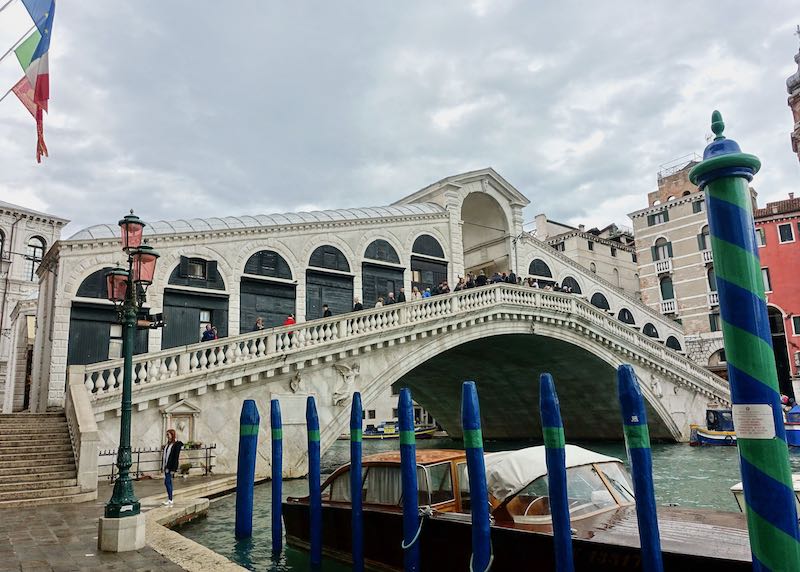
The 400-year-old Ponte de Rialto is the oldest of only four bridges that cross Venice’s Grand Canal and one of the most famous bridges in the world. Originally a pontoon bridge, followed by three doomed wooden bridges, the iconic stone bridge spans the canal with a single arch, designed for galley ships to pass under. Three parallel sets of stairs lead up both sides of the bridge and connect the sestieri San Polo (site of the Rialto Market and oldest part of Venice) to San Marco (site of St. Mark’s Basilica and the Doge’s Palace). The central stairway is lined with shops on both sides of selling jewelry, Murano glass, and souvenirs, while both outer stairways offer romantic views of the gondolas and boats passing through.
5. Gondola Ride

Yes, it’s a tourist trap, but a gondola ride through Venice’s canals is an experience you can’t get anywhere else. Plus you’ll see parts of the city that are inaccessible on foot. Gondolas were the main form of transportation for the Venetian aristocracy beginning in the 11th century and still used daily by many Venetians up to the mid-20th century. These slender, flat-bottomed boats are steered and propelled by a single oar, not a pole. Gondolas are completely handmade from wood in special boatyards called squeri using traditional methods passed down over generations. Gondola rides and rates are regulated by the city. The current rates are €80 for daytime and €100 for nighttime for a 40-minute ride. Gondolas seat up to six, and the rate remains the same whether the boat is full or not. For longer rides, add €40 (day) or €50 (night) for each additional 20 minutes – but always confirm the rate and duration before getting in the gondola. Not all gondoliers sing, so ask ahead for a serenade, which will add another €20 to €30. Near the city’s major attractions (especially near the Doge’s Palace and the Rialto Bridge on the Grand Canal), there are always tons of gondoliers for hire, but it’s better to walk a few blocks away from the crowds or book ahead online to hire a gondolier to navigate the quieter, back canals.
6. Basilica di Santa Maria Gloriosa dei Frari
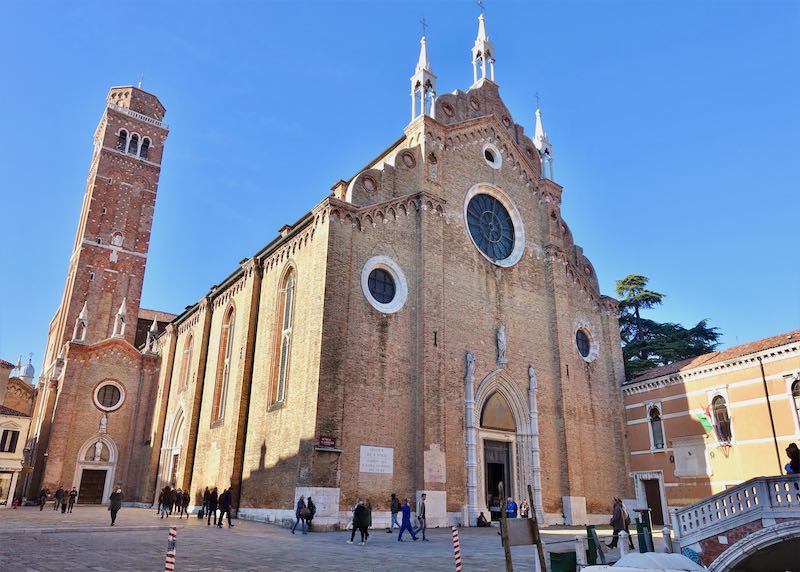
Known familiarly as “I Frari,” this Venetian Gothic church features an understated brick façade that belies its richly decorated interiors. Construction on the basilica began in the 14th century to replace a too-small Franciscan church on the same spot and took over 100 years to build. After St. Mark’s, I Frari is the most important church in Venice, best known for its vast art collection, including sculpture, paintings, and the only rood screen in Venice, elaborately carved in Istrian stone. Notable sculptures here include both Donatello’s and Sansovino’s versions of St. John the Baptist, Alessandro Vittoria’s St. Jerome, and Bartolomeo Bon’s Virgin and St. Francis. Paintings include two masterpieces if Titian, Assumption of the Virgin and Madonna di Ca’ Pesaro (the artist himself is buried here) as well as works by Bellini, Alvise and Bartolomeo Vivarini, Pittoni, and more. The church is free to enter Mondays through Saturdays from 9:00 a.m. to 6:00 p.m. and on Sundays from 1:00 p.m. to 6:00 p.m. Last admission is at 5:30 p.m. daily. A 30-minute audio guide is available at the entrance for €2.
7. Scuola Grande di San Rocco
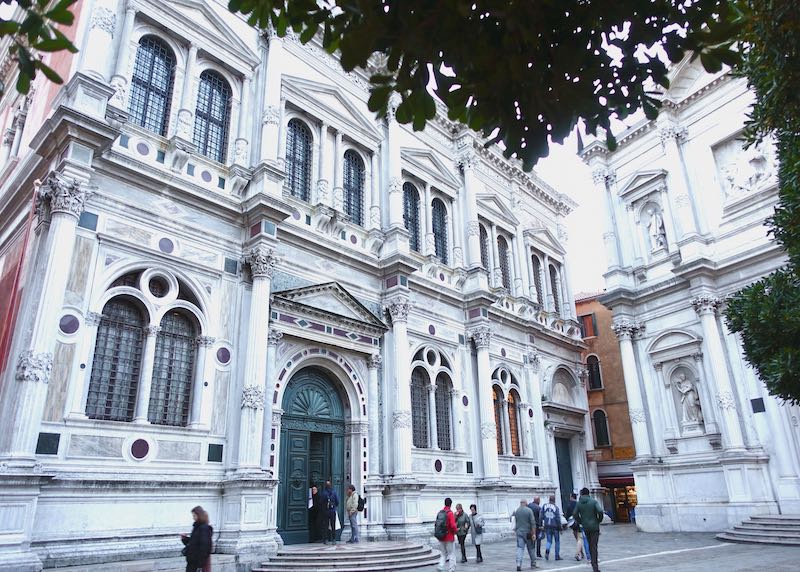
The best preserved of the six Scuole Grandi (Great Schools) of Venice: charitable, religious institutions run by wealthy, Venetian citizens (the middle class, not the nobility) rather than clergy. The Scuola Grande di San Rocco was dedicated to Saint Roch, protector against the plague. Construction on the Scuola’s headquarters began in the early 16th century next to the church that held the saint’s remains. Today the Scuola is mostly visited for its art-filled interiors, including 60 paintings and an altarpiece by Tintoretto, plus works by Titian, Giorgione, Tiepolo, and Pianta. The Scuola Grande is open every day of the year, except Christmas Day and New Year’s Day, from 10:00 a.m. to 5:30 p.m. and costs €10 to enter.
8. Saint Mark’s Square
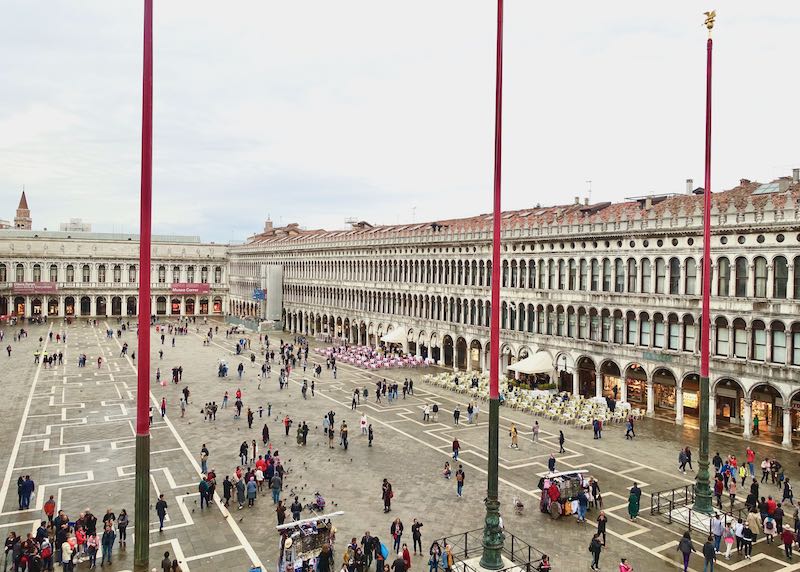
Piazza San Marco is Venice’s main public square and home to the city’s most visited attractions: St. Mark’s Basilica and its bell tower, the Doge’s Palace, the Bridge of Sighs, clock tower, Grand Canal, and more. St. Mark’s Square has been the political and religious heart of the city since the early 9th century, though it’s current look with its symmetrical arches, loggia, and arcades, dates back to the 12th century. With so many must-see attractions here, the square is always busy with tours and tourists. Though much more expensive than other nearby restaurants, it’s worth it to sit down at one of the cafes here for a coffee or spritz, just to take in the scene and people-watch without being jostled by the crowd. Two of the most famous, historic cafes here, Caffè Quadri (the oldest cafe in Venice, since 1638) and Caffè Florian (the oldest continuously operated cafe in Venice, since 1720) offer live classical music on their patios, which face each other across the piazza.
9. Peggy Guggenheim Collection
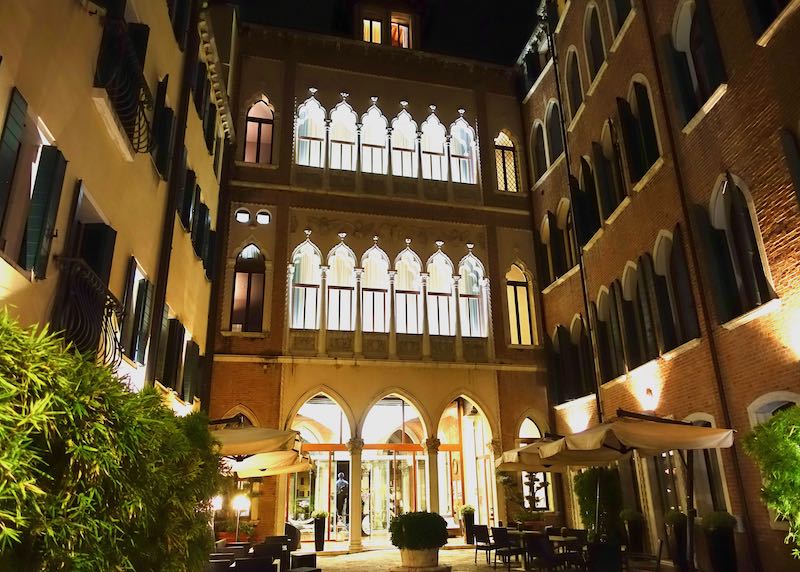
A refreshing change from Venice’s profusion of Renaissance art, the Peggy Guggenheim Collection is among the greatest modern art museums in the world. Housed in an 18th-century palace, the home of socialite Peggy Guggenheim, the art on display is largely from her own personal collection. About 200 European and American luminaries are represented here, among them Picasso, Ernst, Dalí, Kandinsky, Pollock, Giacometti, along with lesser-known folk artists whose work caught her eye. The museum is open from 10:00 a.m. to 6:00 p.m. every day but Tuesday. Tickets can only be purchased online and cost €15; children under 10 enter for free.
10. Rialto Market
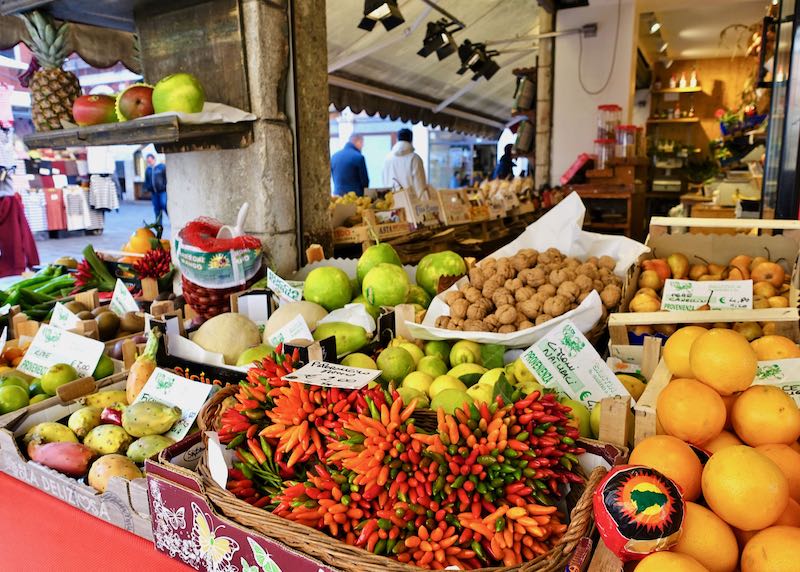
While St. Mark’s Square is the political and religious heart of the city, the Rialto neighborhood is the shopping and financial heart of the city. The Rialto Market was established here in 1097 and has been open for business ever since. There are two main sections, the famous pescaria (seafood market) and the colorful erberia (fruit, veggie, and spice market). Both markets are open Tuesdays through Saturdays from 7:30 a.m. to 1:00 p.m. Only the produce market is open on Mondays. Arrive early to avoid the crowds and to see the fishermen arriving to sell their fresh catch to the market vendors.
11. Jewish Museum of Venice
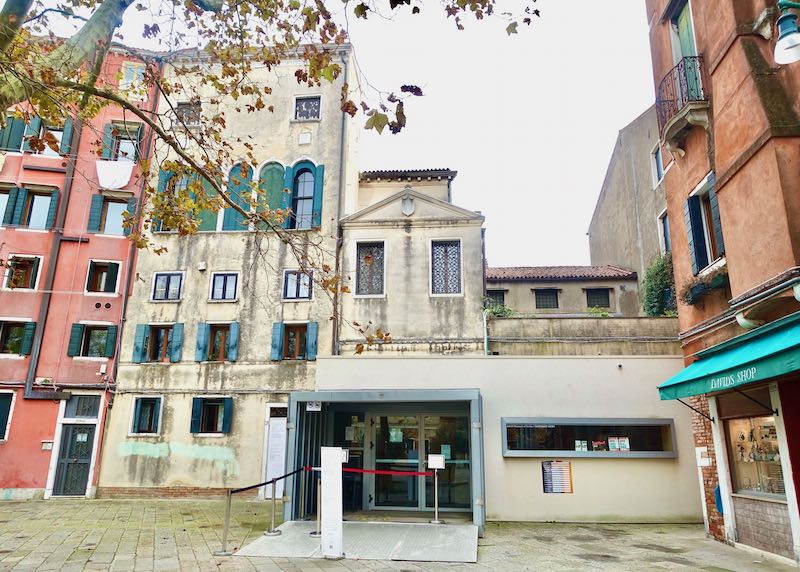
Established in 1516, Venice’s Jewish Ghetto became the first area in Europe where Jewish residents were allowed to permanently settle. The 500-year-old ghetto takes up two islands in the heart of Cannaregio and is home to 5 historic synagogues or scola, which are from oldest to newest: German, Canton, Levantine, Italian and Spanish. With its population booming, the boundaries expanded out then up; here are some of the only medieval buildings reaching up to seven stories in the city. Next to the German Scola sits the Jewish Museum (Museo Ebraico), showcasing art and artifacts of Venetian Jewish life especially goldsmithing and textiles from the 16th through the 19th centuries, as well as a history of Jewish ethnic immigration to medieval and Renaissance Venice and a collection of ancient and rare hand-bound books. The Jewish Museum is open Sundays, Mondays, Tuesdays, Wednesdays, and Fridays from 10:00 a.m. to 5:30 p.m. and Thursdays from 10:00 a.m. to 6:30 p.m. Closed Saturdays. Tickets cost €12 and include a visit to two synagogues.
12. Church of San Giorgio Maggiore
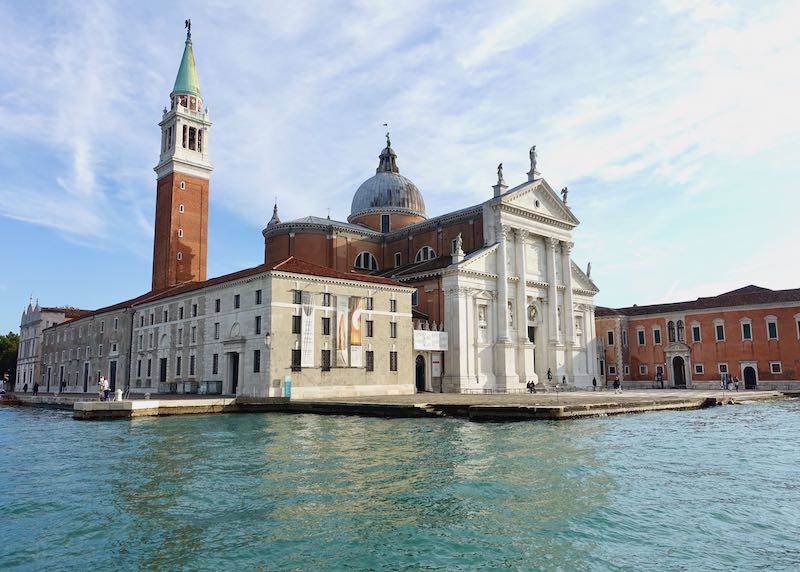
Landmark, white marble church designed in the mid-16th-century by master architect Palladio and overflowing with art by Tintoretto, Sebastiano Ricci, Jacopo Bassano, and (on some high-season, guided tours) Carpaccio. The church’s architecture is notable for its two, interlocking façades, a method Palladio used to harmoniously blend Renaissance Christian ideals with ancient Roman temple design. Behind the church is a bell tower dating to the 18th century; there is an elevator to the top, from which sweeping views toward Piazza San Marco (impossible to capture from the bell tower in the square itself) and on clear days, all the way to the Alps. While on the island, be sure to visit Fondazione Giorgio Cini, a cultural institution set in a beautifully restored Benedictine monastery and gardens, including the Borges Labyrinth and the Wood with the Vatican Chapels, plus a café, renowned library, and a 19th century squero (a special boatyard for gondolas) converted into an auditorium. The Church of San Giorgio Maggiore is open daily April through October from 9:00 a.m. to 7:00 p.m. and daily November through March from 8:30 a.m. to 6:00 p.m. The church is free to enter; the bell tower costs €6. The Cini Foundation is open daily (except Wednesdays) from 11:00 a.m. to 7:00 p.m. for self-guided tours which can be booked online and cost €14 to €18.
13. Ca’ Pesaro International Gallery of Modern Art
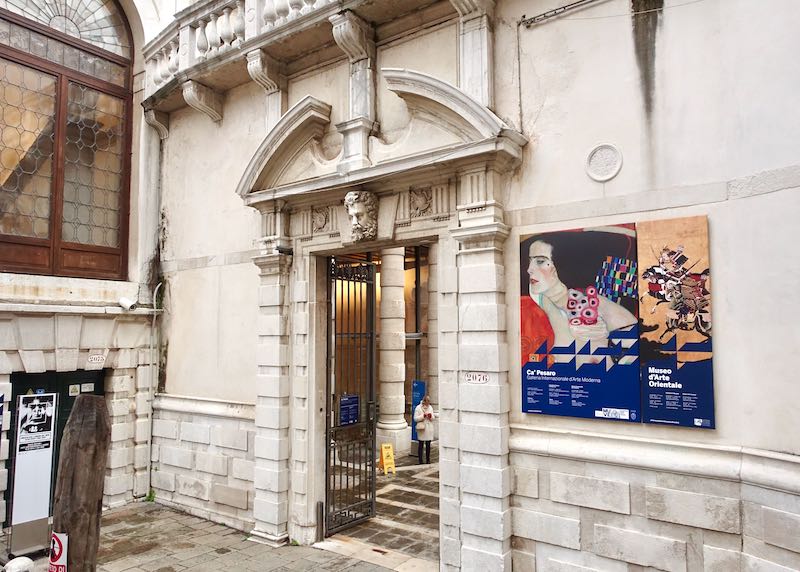
Rich collection of 19th and 20th-century painting and sculpture set in an elaborate, 17th-century, Baroque palace. The palace itself is a work of art with diamond rustication along its ground floor and two floors above with double-thick rows of columns; inside many of the original Baroque and Rococo frescoes and oil paintings remain intact on the ceilings. The art collection within features masterworks by Klimt, Rodan, Chagall, Matisse, Lichtenstein, and more. The main galleries cover the first two floors. The third floor holds the Museum of Oriental Art, boasting a large collection of Japanese art from the Edo period (17th through 19th centuries), plus a few Islamic pieces from the 12th through the 15th centuries.
14. Basilica di Santa Maria della Salute
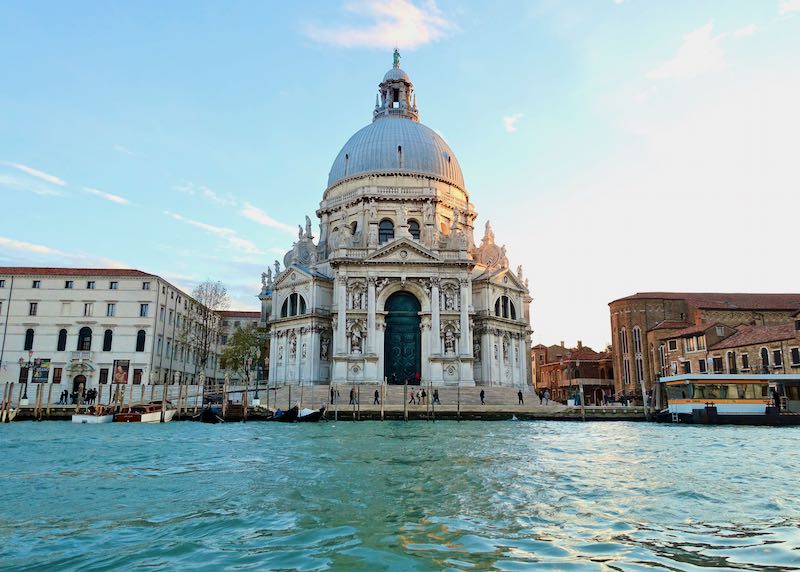
Usually just called La Salute, this 17th-century basilica is considered the greatest work of architect Baldassare Longhena (who also designed Ca’ Pesaro). The church was commissioned by the Venetian Senate in response to a wave of the plague and dedicated to Our Lady of Health; much of the artwork inside features the plague as a theme. The domed, octagonal building was designed to look like a crown. Inside, the walls and ceilings are adorned with several works by Titian, along with art by Tintoretto, Pietro Liberi, and Josse de Corte. Most days in the late afternoon, organ vespers are held in the church using an organ built into the church in 1783. The church is free to enter daily from 9:30 a.m. to 12:00 p.m. and from 3:00 p.m. to 5:30 p.m. The sacristy with 12 pieces by Titian, Tintoretto, and more costs €4 to enter and is open Mondays through Saturdays from 10:00 a.m. to 12:00 p.m. and from 3:00 p.m. to 5:00 p.m. and on Sundays from 3:00 p.m. to 5:00 p.m.
15. Teatro la Fenice
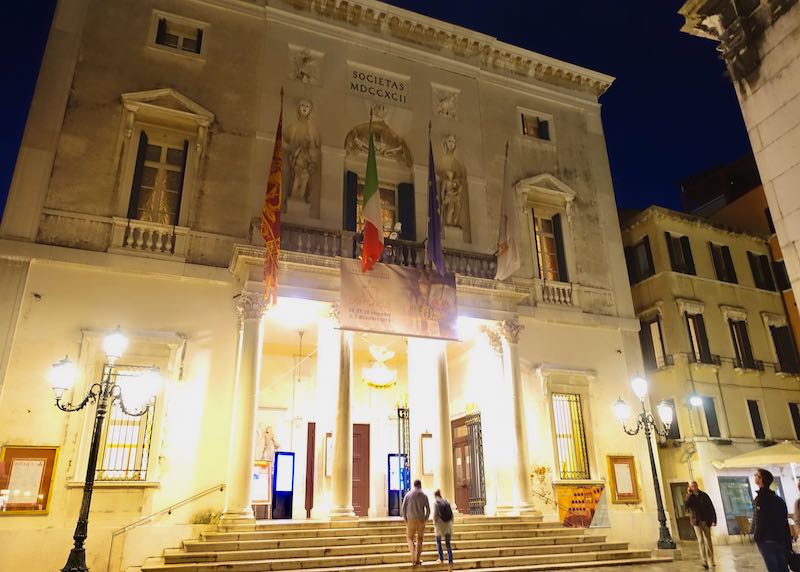
Venice’s opera house, La Fenice is among the most beautiful in the world. In its heyday, the theater debuted several landmark operas, including Verdi’s La Traviata and Bellini’s I Capuleti ed i Montecchi, as well as works by Rossini, Stravinsky, and Donizetti. Built in 1792 in a Neoclassical style to replace an older theater that burned down (hence the name La Fenice, meaning “the phoenix”). This new theater itself burned down twice: once in 1836, after which the opera was rebuilt in a more “modern” style, and again in 1996 with an act of arson. The current opera house has been faithfully reconstructed as it was in its 19th-century iteration with its decadent Rococo and Empire-style interiors and Neoclassical, white marble façade (the only part of the opera house to survive both fires). There is also a permanent Maria Callas exhibition concentrating on her years in Venice from 1947 to 1954. La Fenice hosts operas, ballets, and concerts throughout the year; tickets can be purchased online. The theater also offers self-guided (€11) or professionally guided (€39) tours daily from 9:30 a.m. to 6:00 p.m.
16. Day Trip to Cittadella

Though there are several walled cities throughout Europe, Cittadella is the only one whose walls are completely intact and restored. Visitors can walk the full circuit around the city along the medieval parapet. The wall runs about 1.5 km around the town and stands about 15 meters tall and 2 meters wide studded with defensive towers reaching up to 30 meters. Just outside the fortified walls, a moat surrounds the city. Cittadella was founded as a military outpost of Padua in the 13th century when it was at war with neighboring communes Treviso and Vicenzo. Enter through the North Gate (Bassano Gate) to reach the Captain’s House, which now houses the tourist office and a small museum of medieval life and weaponry. Within the city, there are a handful of historic churches, an art-filled cathedral, a 15th-century palace, a 19th-century theater, and the infamous 13th-century Torre di Malta, a prison and torture chamber mentioned in Dante’s Divine Comedy. The city walls are available to visit every day but Christmas from 9:00 a.m. to 2:00 p.m. and 3:00 p.m. to 5:00 p.m. (January, February, November, December), from 9:00 a.m. to 2:00 p.m. and 3:00 p.m. to 5:00 p.m. or 6:00 p.m. (March, October), from 9:00 a.m. to 2:00 p.m. and 3:00 p.m. to 7:00 p.m. (April, May, September) and from 9:00 a.m. to 2:00 p.m. and 3:00 p.m. to 7:00 p.m. (weekends by reservation until 10:00 p.m. – June, July, August). Tickets are €5 and include access to the Frescoed Room and Medieval Museum in the Captain’s House and the Archaeological Museum, Siege Museum, and Panoramic Terrace in the Torre di Malta.
17. Church of Santissimo Redentore
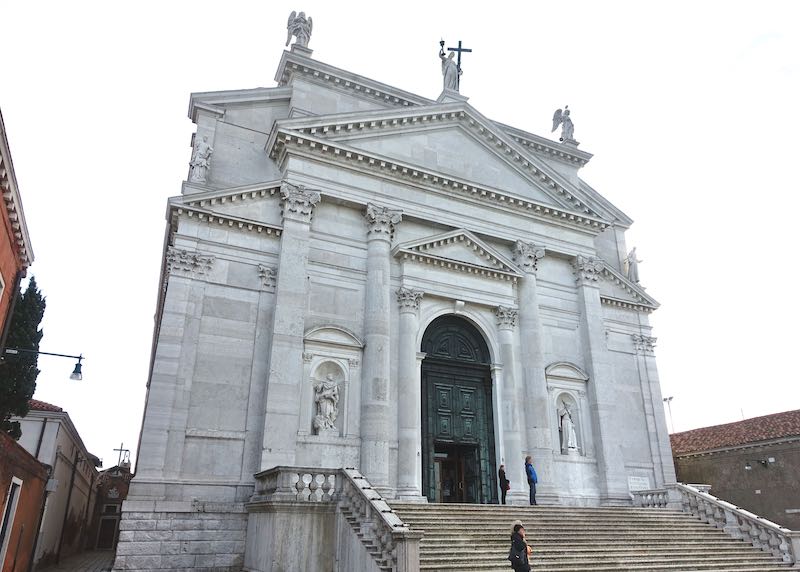
The Church of the Most Holy Redeemer, usually shortened to Il Redentore, is a Renaissance church built on Giudecca island as a token of thanks to God for delivering the city from a devastating plague. Designed and built by Palladio (the architect behind the Church of San Giorgio Maggiore) and after his death, completed by Antonio da Ponte (the architect responsible for the Rialto Bridge). Il Redentore features a white marble façade designed after ancient temples with a brick exterior, dome, and two bell towers with a slight Turkish influence. Inside the church continues the temple-theme in white with a row of Corinthian columns running the length of the aisle. The sacristy boasts an impressive art collection with paintings by Veronese, the Bassanos (Francesco, Leandro, and Jacopo), Tintoretto, and Rocco Marconi, among others. Visit on the third Sunday in July for the Festa del Redentore, a uniquely Venetian celebration since 1592, with fireworks the night before and a procession on a temporary pontoon bridge from the Zattere across the canal to the church.
18. Chiesa di San Zaccaria
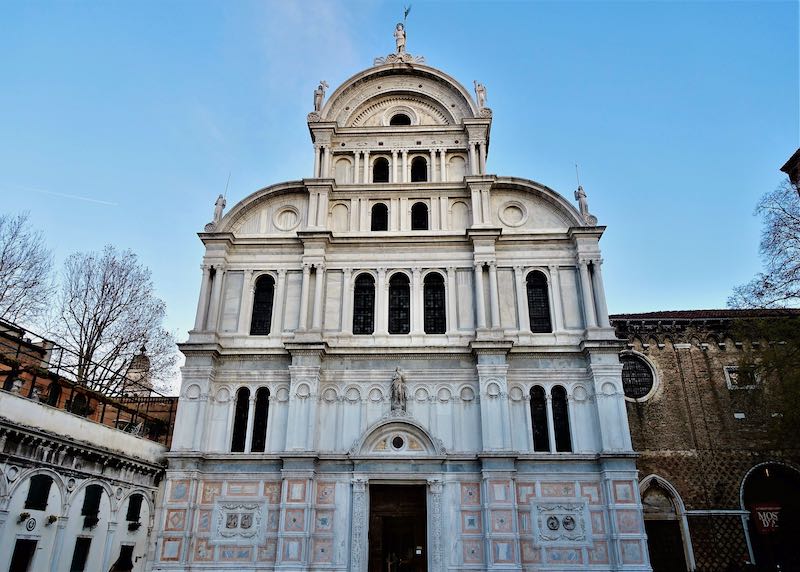
The Church of Saint Zechariah is a small church with quirky architecture and history. Originally commissioned in the 9th century to house the remains of its namesake saint, the church’s crypt also contains the bodies of eight doges. The crypt features a vaulted ceiling with columns, and its permanent flood of canal water creates a mirror effect where the columns seem taller and the tombs stand like little islands. The church was attached to a convent mostly populated by the daughters of noble families; the convent was known for its casual disregard of monastic norms. Rebuilt in the 12th century after a fire and rebuilt again in the 15th century, the current church features a façade that was begun in a Northern European Gothic style (not typical of Venice) and finished by a different architect in a Renaissance style. Today the church is mostly visited for its art collection; almost every wall is covered in paintings, frescoes, and some mosaics. Bellini’s altarpiece here is among his greatest achievements; other artists represented here include Tiepolo, Tintoretto, Andrea del Castagno, Anthony van Dyck, Palma Vecchio, and more. The church is free to enter and open Monday through Saturday from 10:00 a.m. to 12:00 p.m. and from 4:00 p.m. to 6:00 p.m. and on Sundays from 4:00 p.m. to 6:00 p.m. The flooded crypt and the sacristy where Tintoretto’s and Tiepolo’s paintings are costs €1.50 to visit.
19. Villa Pisani, Stra
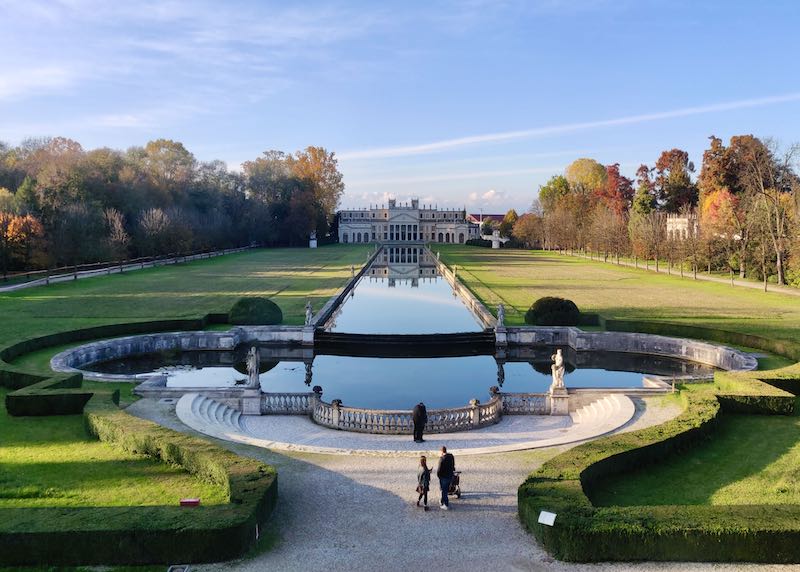
Gorgeous, 18th-century Baroque palace with lush gardens, a reflecting pool, and a labyrinth. The sprawling Villa Pisani National Museum has 114 rooms in homage to its owner, Alvise Pisani, the 114th doge of Venice. The villa was later bought by Napoleon, whose bedroom is preserved here, and later still by the House of Hapsburg. The interiors feature vivid frescoes by Tiepolo, Jacopo Amigoni, Giovanni Carlo Bevilacqua, and more. The garden covers 11 hectares and blends French and local Venetian styles. The grounds feature an orangery, statues, and a small forest. The highlight is the labyrinth – a medieval-style, mostly circular hedge maze with a lookout tower in the center. There is a charming café set in a renovated former stable in the garden. The palace is open Tuesdays and Thursdays from 2:30 p.m. to 8:00 p.m., Wednesdays and Fridays from 8:30 a.m. to 2:00 p.m., and on Saturdays and Sundays from 8:45 a.m. to 2:00 p.m. and from 2:45 p.m. to 8:00 p.m. Closed Mondays. Last entrance 1 hour before closing. Combined tickets for the villa and park cost €7.50. Villa Pisani, Stra is easy to reach from Venice by the 53E bus leaving from Piazzale Roma.
20. Concert in the Church of San Vidal
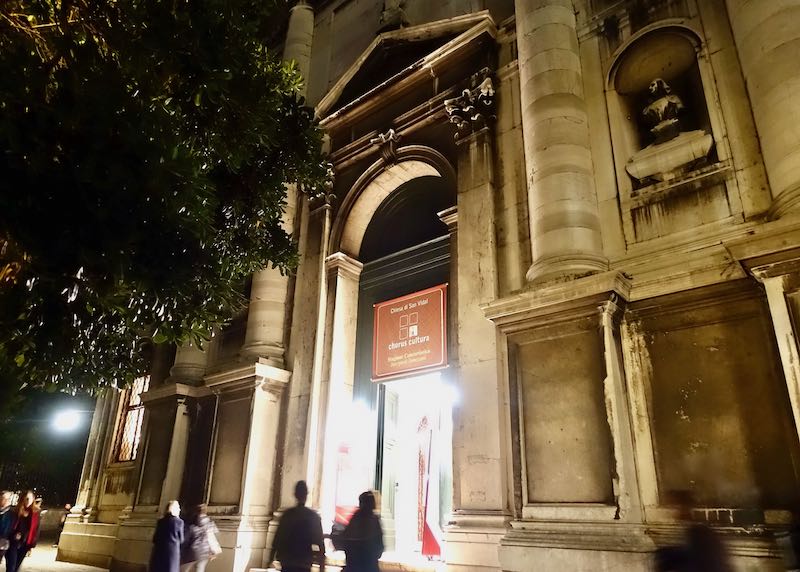
A former church and current concert hall, San Vidal is the best place in Venice to experience classical music. The thousand-year-old church was renovated over the centuries and features a neoclassical façade and dramatic paintings, most notably the 16th-century altarpiece by Carpaccio, along with Baroque and Rococo era paintings by Sebastiano Ricci, Giulia Lama, and Giovanni Battista Piazzetta. There is also a small collection of historic musical instruments here. Concerts are held several nights a week by Interpreti Veneziani, an ensemble focusing mainly on Baroque music, especially Vivaldi, but also classic and modern genres. The church is free to visit daily from 9:30 a.m. to 8:00 p.m. Concert tickets cost about €30, usually begin at 9:00 p.m., and take place 3 to 7 nights a week.
21. St. Mark’s Clock Tower
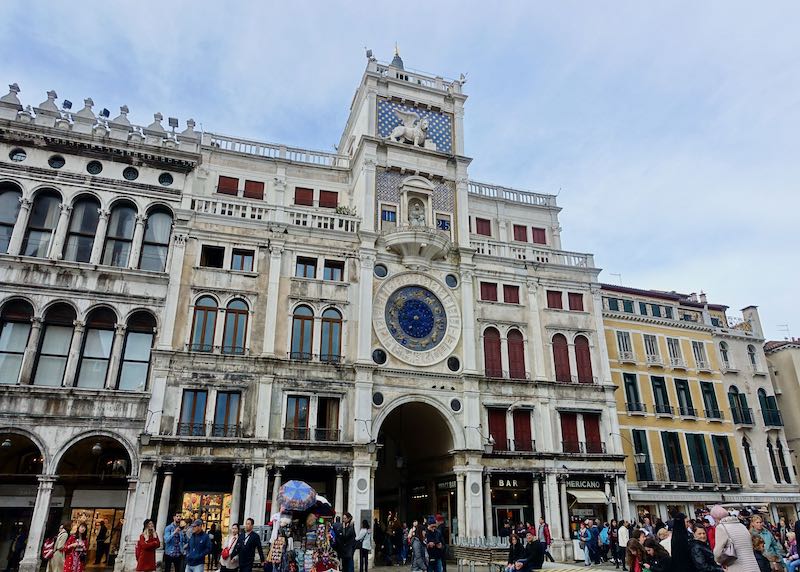
The Torre dell’Orologio is a 15th-century clock tower in St. Mark’s Square facing south toward the Grand Canal and designed to be visible to arriving ships. The clock displays time using Roman numerals to display the 24 hours of the day, plus the current phase of the moon, and the dominant Zodiac sign. Above the original clock face, one of the world’s first digital clocks was added in the mid-1800s, with the hours in Roman and the minutes in Arabic numerals in 5-minute increments. Above the digital clock is a winged lion, the symbol of St. Mark, and on top of the tower is the bell rung every hour by two bronze statues of shepherds, known colloquially as the Moors, due to their dark patina (the clock itself is sometimes called “The Moors’ Clocktower”). Twice a year, during Epiphany (January 6) and Ascension Day (the Thursday 40 days after Easter) a procession of an angel and the Three Magi carved in wood emerge from behind the digital clock every hour as the bell tolls. One-hour tours of the inner working of the clocktower are available on request Mondays through Wednesdays at 11:00 a.m. and 12:00 p.m. and on Thursdays through Sundays at 2:00 p.m. and 3:00 p.m. Closed only on Christmas and New Year’s Day. Tickets are €12.
22. Casa dei Tre Oci
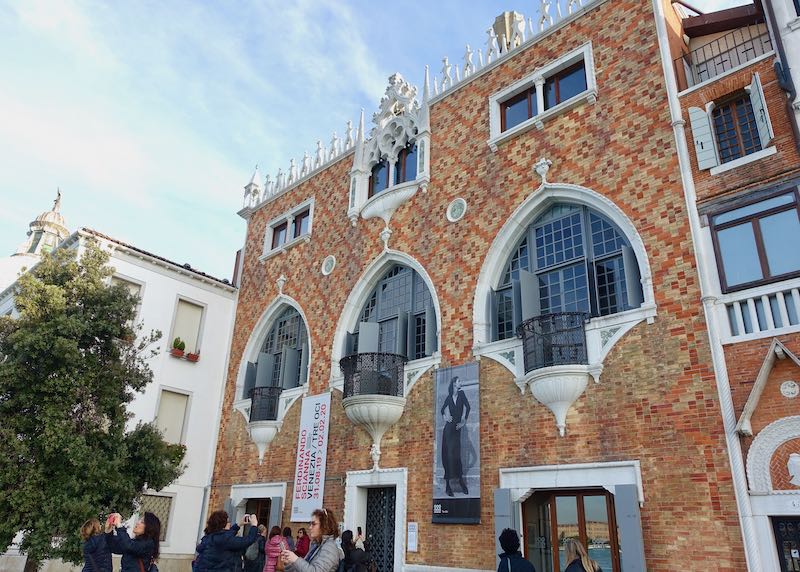
Neo-gothic palace designed in 1913 by photographer Mario de Maria as his home. Its name “Tre Oci” is Venetian for “three eyes,” named for its three large windows facing over the Giudecca canal toward Dorsoduro and San Marco. The house operates as a museum now with de Maria’s photo collection on display as well as contemporary photography exhibits, photography lessons, and workshops for adults and children. Tickets cost €13. Casa dei Tre Oci is open Wednesdays through Sundays from 11:00 a.m. to 7:00 p.m.; closed Mondays and Tuesdays.
23. Scala Contarini del Bovolo
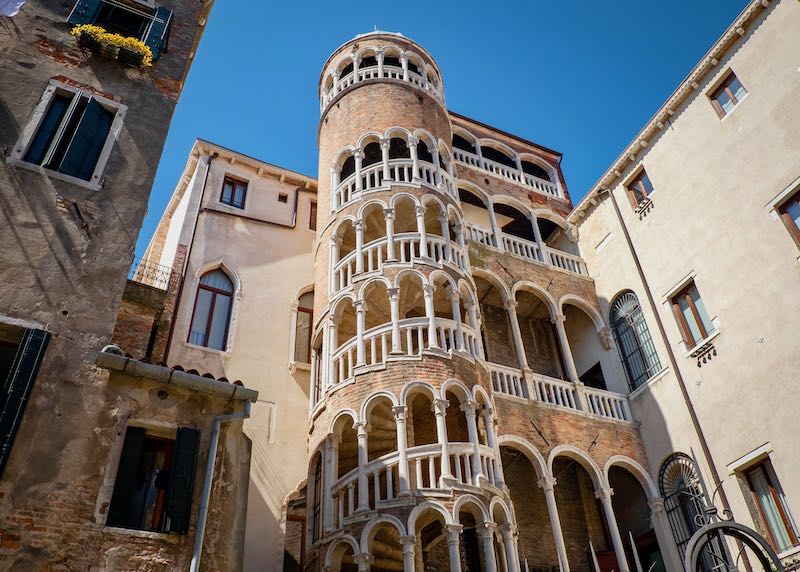
A hidden gem in the maze of Venice backstreets, this spiral staircase was a late 15th-century addition to an already existing Gothic palace. Unusual for its time, the stairway was called the “bovolo,” meaning “snail,” and the name was subsequently given to the palace it was attached to and the Contarini family who lived there. The staircase rises about 27 meters high with 80 steps, surrounded by layers of loggias in brick and white Istria stone to match the adjoining building. The loggias on the stairs decrease in height closer to the top, creating the illusion that the tower is taller than it actually is. Climb the stairs to reach a panoramic terrace with views over the city, but pause on the second floor and enter the Tintoretto Room in the palace, with paintings by the namesake artist and other Venetian works from the 16th through 18th centuries. The Scala is open daily from 10:00 a.m. to 6:00 p.m. and costs €7 to enter. Advanced reservations required.
24. Squero San Trovaso
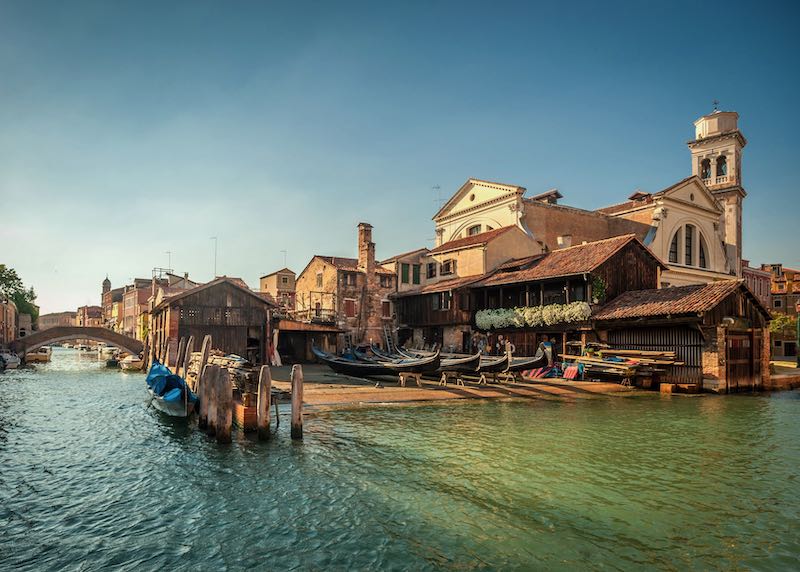
One of only a handful of boatyards remaining devoted to Venetian gondolas. Gondolas are built completely by hand using traditional methods and tools, each customized to fit the gondolier who owns it. Squero San Trovaso is one of the oldest, dating to the 17th century, with each workshop run by generations of artisans specializing in particular aspects of repair, maintenance, and to a lesser degree, building. Only ten or so gondolas are built each year. Most visitors opt to watch the workers from across the Fondamenta Nani across the Rio de San Trovaso, but the squero now offers 30-minute, guided tours bookable by email with explanations of the boat-building process.
About Santorini Dave